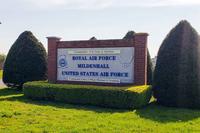Last week, Taiwan stepped up pressure on the Obama administration to sell the country new, upgraded F-16s, something this administration, like the Bush administration before it, refuses to do to avoid antagonizing China. The latest Taiwanese move came from its defense ministry, which released a report saying that China’s continued modernization of its fighter fleet has shifted the cross-strait military balance decidedly in China’s favor.
The report says Taiwan’s ageing fleet of some 400 locally built fighters, French made Mirage 2000s, and 146 F-16A/Bs, are outmatched by China’s massive fighter fleet, particularly with China’s growing numbers of Russian built Su-30s. Only Taiwan’s F-16A/Bs have an edge over Chinese fighter aircraft, the report says. Taiwan requested some 66 F16C aircraft from the U.S. in 2006.
Over at right-leaning think tank AEI’s defense blog, Michael Mazza raises the alarm:
“Are policymakers considering the implications of this? The smaller and more antiquated the Taiwan air force is, the greater the number of American pilots in harm’s way should the U.S. ever need to go to the island’s defense. It’s not clear that anybody is doing this math, as simple as it is.”
Actually, RAND did the math on this one in a report last year, in typical RAND style, using sophisticated modeling to simulate a Chinese invasion of Taiwan in the 2010-2015 timeframe. RAND’s conclusion was that the addition of a few dozen upgraded F-16s would have little to no impact on the cross-strait balance. In fact, RAND found that in the event of a Chinese attack, “the air war for Taiwan could essentially be over before much of the Blue air force has even fired a shot.”
It’s not the Chinese air fleet that would deliver the knock out blow to Taiwanese air power. Rather, its China’s massive arsenal of ballistic missiles that in an opening salvo would destroy most Taiwanese aircraft, even those in hardened shelters, and wreck its runways before Taiwan was able to launch its fighters.
Adding new F-16s to China’s inventory does little to change the ultimate outcome. Well, more Taiwanese aircraft would make a small contribution RAND found: “Taiwan’s air power can at least contribute to the anti-invasion defense by absorbing as much of China’s air effort as possible in the process of being put out of action.” In other words, parking more fighters on Taiwan’s ramps would make the Chinese deplete more of its missile magazines.
The answer to the cross-strait military balance will not come in the form of more short range tactical fighters sat on ramps within range of China’s massive missile force. As the RAND study conclusively shows, selling Taiwan more capable F-16s does nothing to change the military balance.
-- Greg









